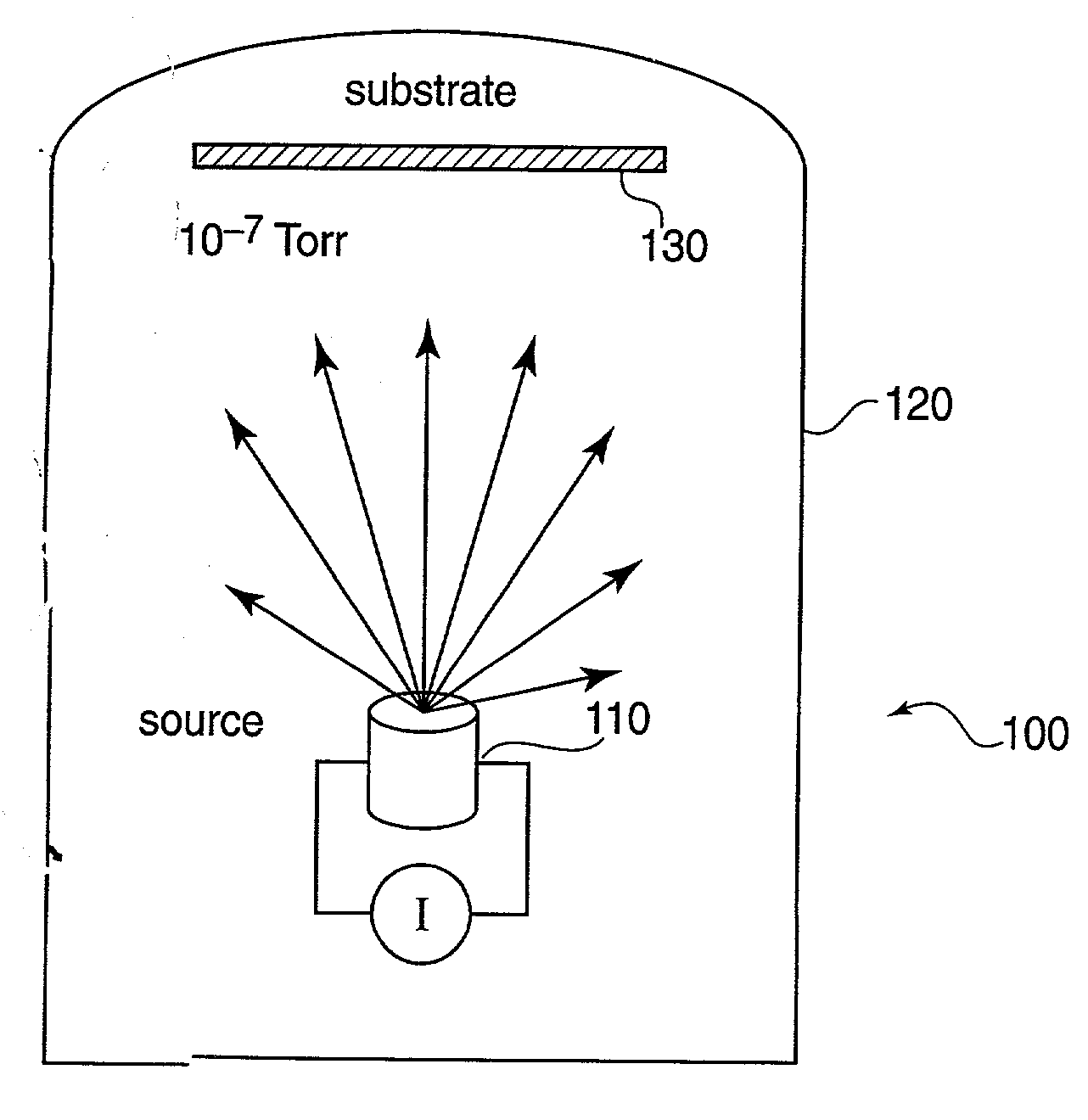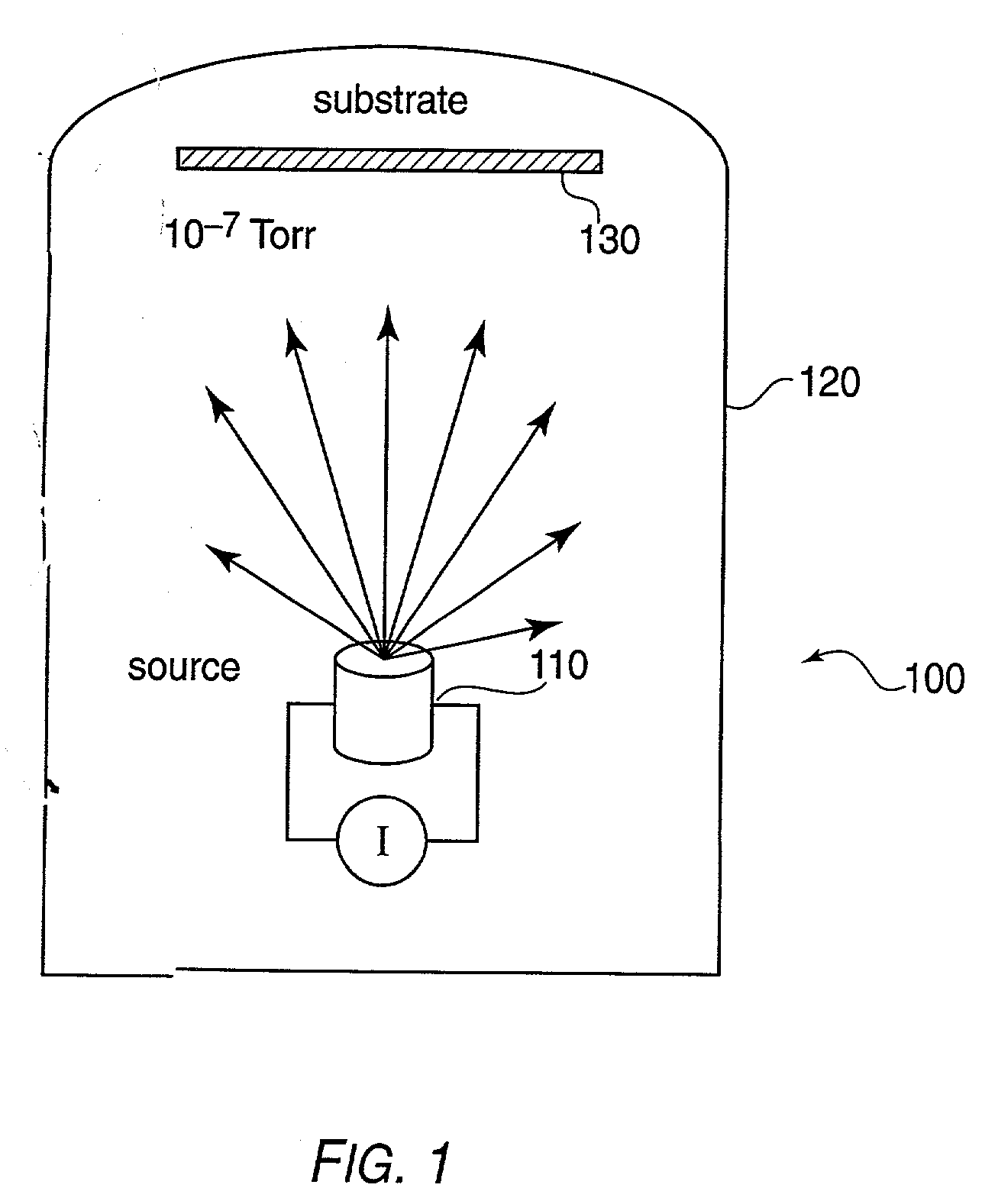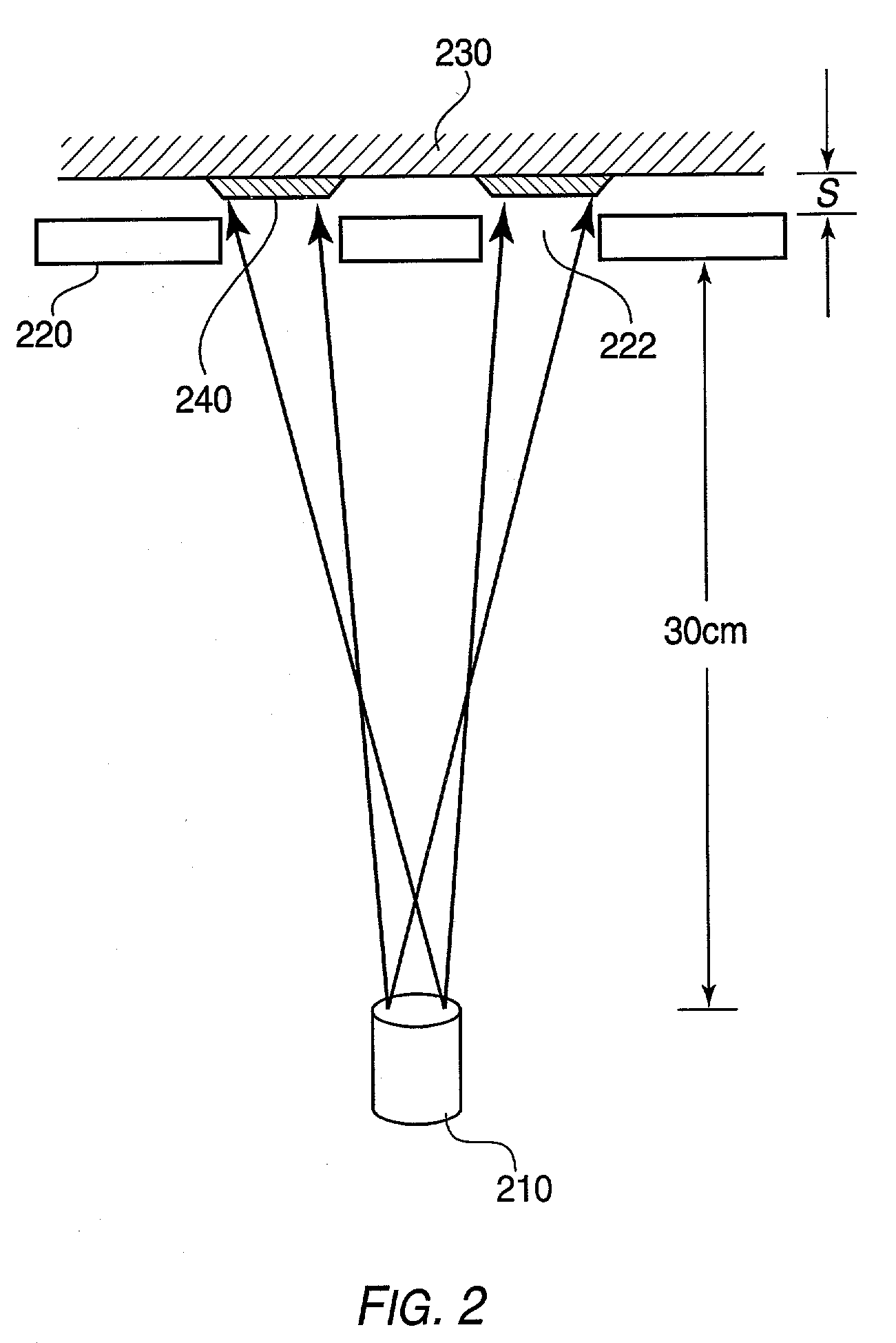Process and apparatus for organic vapor jet deposition
- Summary
- Abstract
- Description
- Claims
- Application Information
AI Technical Summary
Benefits of technology
Problems solved by technology
Method used
Image
Examples
Embodiment Construction
[0039]Embodiments of the present invention are directed to a process of patterned deposition of organic materials onto substrates utilizing the vapor transport mechanisms of organic vapor phase deposition, and to an apparatus for performing this process of patterned deposition. In one embodiment, the process comprises: transporting organic vapors via an inert carrier gas moving at a flowrate V from a source cell, through a timed valve, and into a nozzle block, wherein the transport occurs at low pressure P; ejecting the organic vapors from the nozzle block onto a cooled substrate via the inert carrier gas moving at a flowrate V; and laterally translating the cooled substrate, which is maintained at a distance s from the ejection end of the nozzle block, at a rate v. The rate of translation is synchronized with the timed valve to create the desired patterned deposition of organic materials.
[0040]FIG. 1 shows a vacuum thermal evaporation (VTE) system 100. A source 110 is heated such t...
PUM
| Property | Measurement | Unit |
|---|---|---|
| Length | aaaaa | aaaaa |
| Length | aaaaa | aaaaa |
| Length | aaaaa | aaaaa |
Abstract
Description
Claims
Application Information
 Login to View More
Login to View More - R&D
- Intellectual Property
- Life Sciences
- Materials
- Tech Scout
- Unparalleled Data Quality
- Higher Quality Content
- 60% Fewer Hallucinations
Browse by: Latest US Patents, China's latest patents, Technical Efficacy Thesaurus, Application Domain, Technology Topic, Popular Technical Reports.
© 2025 PatSnap. All rights reserved.Legal|Privacy policy|Modern Slavery Act Transparency Statement|Sitemap|About US| Contact US: help@patsnap.com



